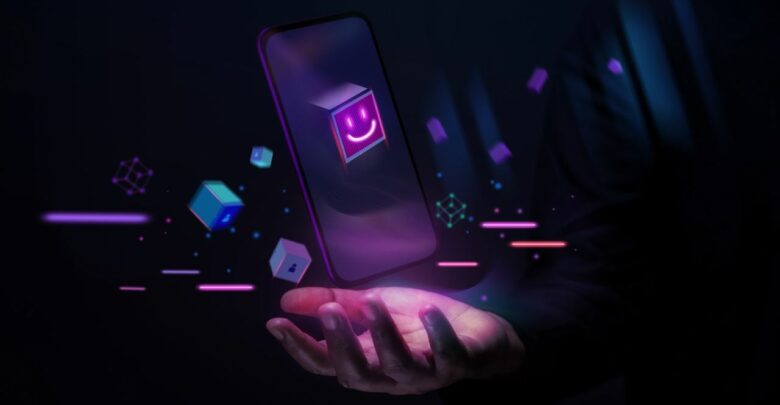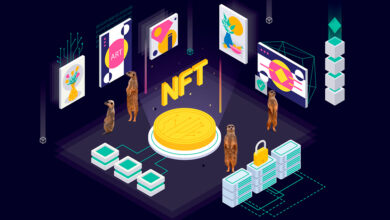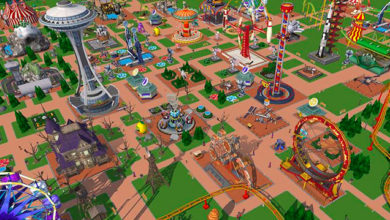

The NFT market has been booming with a growth rate of more than 21.000% in 2021. Most people associate NFTs with JPEG pictures of the Bored Ape Yacht Club & CryptoPunks. However, putting the hype aside, NFTs have gone even further — into industries from art, sports, and gaming to logistics and even wine production.
By now, it is clear that the future will eventually rely heavily on blockchain, and the impact it will have on private businesses and consumers is huge. At this moment, NFTs are the darlings of Web 3.0, but their use cases are merely getting started. In this article, we will explore why they matter, how they are affecting the way we interact with each other online and how they are opening up new revenue streams.
Top 10 most promising NFT use cases
Tokenized art and game collectibles have made the biggest headlines. Yet NFTs are not just about these two areas anymore. So what else can NFTs be used for? As the tech matures, more use cases emerge: NFTs have now been introduced to logistics, real estate, DeFi, patenting, fashion, and many more industries. Let’s take a closer look at each of these domains and see what exactly non-fungible tokens can do there.
1. Virtual land as NFTs
NFT virtual land is an ownable area of digital land on a metaverse platform. Popular NFT land projects include Decentraland, The Sandbox, and Axie Infinity. NFTs are suited to representing land ownership as each one is unique and easily proves digital ownership. You can use NFT land for advertising, socializing, gaming, and work, among other use cases.
The landowner can normally use their plot to host online experiences, display content, or gain benefits in a game. Large brands and celebrities, including Gucci, PwC, Samsung, JP Morgan and Snoop Dogg, are also beginning to invest in and use NFT land.
Apart from speculation, landowners can use their virtual space in various use cases:
- Advertising: If your plot is in a popular area or district and attracts many visitors, you can charge for advertising space.
- Socializing: You can host events on your digital land, including concerts, conferences, and community meet-ups.
- Gaming: Your NFT land might have a use in an NFT video game. For example, land in Axie Infinity can provide extra resources, tokens, crafting ingredients.
- Work: Land that can be explored with a 3D avatar can be used as a virtual office space or to provide digital services. PwC Hong Kong will use The Sandbox land in their Web 3.0 advisory services.
2. NFTs in logistics and supply chain
While NFTs are a relatively new trend, blockchain technology has been influential in the logistics industry for quite a while now. Blockchain technology in logistics greatly helps with authenticating goods and verifying their origin, thereby preventing counterfeiting. NFTs in logistics can bring another benefit — they are usually assigned to unique items, so can be used to track, for example, luxury goods on their journey to the end consumer.
Let’s say you own a luxury clothing brand and want to be sure that every item is delivered in the right conditions and your consumers receive real designer articles of clothing. In this case, you can choose to assign NFTs to them.
Let’s say you own a luxury sneakers brand and want to be sure that every item is delivered in the right conditions and your consumers receive real designer articles. In this case, you can choose to assign NFTs to them.
For instance, a collection of high-end sneakers produced in France needs to be delivered to a store in Dubai. Each of them is assigned its own token, which is also physically placed on the package. By scanning the NFT, supply chain workers can check metadata on the sneakers’ origin and track their entire journey. That metadata is timestamped, verified, and immutable, so there is almost no chance that the product will be replaced with a fake, as that would be detected right away. As the sneakers go through each stage of the delivery process, new timestamped metadata is recorded. When the sneakers arrive at the store, the NFTs are scanned and the store can check all shipping details and verify the authenticity of the items delivered.
3. NFTs in fashion and wearables
Simply put, wearable NFTs are pieces of virtual clothing or digital accessories like dresses, shirts, jeans, sunglasses or bags that you can use to dress-up your avatar in a virtual world.
These digital-only designs are made possible through the use of blockchain technology and smart contracts, which help prove the uniqueness, authenticity and ownership of each garment or accessory. In essence, the technology creates digital scarcity while facilitating a raft of upsides. Given the very real problem of counterfeiting, it’s only natural that fashion NFTs have seen immense interest lately. After all, customers willing to purchase 4000€ digital luxury bags will surely want to make sure they’re not shelling out for a fake, even if only a virtual one.
But the rise of the ‘blockchain style’ is rapidly expanding beyond the sale of individual wearable NFTs as more brands pour their creative efforts into designing wardrobe collectibles made in collaboration with celebrities and public figures.
With wearable NFTs across worlds, designers are experimenting with new monetization models in which they not only sell garments, but also become co-owners of their creations or embed royalties into them so that every time an NFT changes hands, the fashion brand and creator automatically receives a percentage of the sale.
4. NFTs for digital identity
Despite advances in technology and the introduction of new ways to protect personal data, identity theft cases are still growing at an alarming pace.
What can be done to better protect people’s data and help them take control of their own digital identity? NFTs could be one option. They allow people to actually own their personal data in a brand new way. While NFTs in art and gaming can be traded on marketplaces, NFTs for digital identity work very differently. Of course, you can’t sell your diploma, but having your document as an NFT proves that you own it and it is authentic.
Almost any kind of document can be tokenized and represented as an NFT, from licenses, birth certificates and degrees to visas and even COVID-19 vaccination passports. IDs or certificates, which are often issued digitally nowadays, can be issued directly as non-fungible tokens through blockchain technology.
Thus, using NFTs to digitally store documents and create digital identities gives users the opportunity to better manage their data and helps eliminate document forgeries.
5. NFTs and patenting
Patent holders are now tokenizing patents as NFTs to manage the ownership and licensing of their patents. With the help of smart contracts on the blockchain, records about patenting and patent holders are created and stored there forever. Any new information about the transfer and use of the patent is added as new blocks. Thus, the establishment of legal rights associated with patents, as well as the patenting of new inventions, become fast, accessible, and transparent.
Nike, a world-famous sportswear company, has secured a patent for “CryptoKicks”. When purchasing a pair of shoes, the customer also receives a token, which is a digital representation of an original pair of shoes. The NFT guarantees the authenticity of the sneakers and identifies their rightful owner. Customers will also have an opportunity to trade tokens just like they might sell their physical items.
6. NFTs and DeFi
Although it may be difficult to immediately see how NFTs and DeFi can be combined, there are already many real-world examples of how the two concepts successfully work together.
Decentralized finance (DeFi) represents an alternative to traditional financial services. The main advantage of DeFi is that it eliminates the need to turn to intermediaries. This is possible thanks to the use of smart contracts that enable network users to interact directly with each other and perform fast transactions.
As the NFT market grows, NFT collectors are striving to find new ways of capitalizing on their assets. Now, in addition to simply reselling tokens, collectors can leverage their assets using DeFi mechanisms such as lending, borrowing, and staking.
NFT holders can lend their NFTs to borrowers and receive interest. By lending through blockchain platforms, they don’t actually lend real NFTs, but token holders usually offer the full or partial value of the NFT in cryptocurrency.
7. NFTs for real estate
What do we all know about real estate? It costs a fortune, it involves a lot of red tape, and it’s just way too complicated. Taking this into account, there’s clearly an entry barrier for smaller investors and consequently a lack of liquidity.
NFTs in this area could be game-changing, and here’s why:
- They can introduce fractional tokens and, as a result, fractional ownership. This will open doors to smaller investors
- They can be used as registries that clearly define property rights and enable fast and convenient ownership transfer
- They can eliminate the need for multiple intermediaries thereby saving the investor and property owner time and money
For instance, you only have 1000€ and you would like to invest it in real estate. The way real estate works today, it would be completely impossible. NFTs are the innovation that can make it possible, because the property owner can divide the property into tokens and sell them to individual investors.
Real estate is also flooded with endless bureaucratic procedures and middlemen, from agents and financial institutions to lawyers, trustees, and so on. Property tokenization makes it easier to process legal documents and manage real estate transactions. They are conducted directly through blockchain platforms and involve no intermediaries.
While real estate is an industry that doesn’t really welcome radical change, many real estate agencies are already starting to dive into NFTs and consider implementing them.
8. NFTs for the ticketing industry
The ticketing industry has always been a target for scalpers and scammers. Everyone involved in the event suffers because of them — fans spend a lot of money and still cannot enter the site and see their favorite band or sports team, and organizers and performers lose tons of money and probably even fans’ support.
The introduction of non-fungible tokens in the event and ticketing industry brings tremendous benefits to ticket-selling companies. Most importantly, if the company issues tickets as NFTs, the underlying blockchain technology will solve the problem of counterfeit tickets and thereby protect buyers.
The blockchain records information starting from the very creation of the ticket in the system. The information is timestamped, verified, and cannot be deleted, edited, or tampered with, so the NFTs created on the blockchain help the audience verify the authenticity of their tickets and eliminate the chances of getting scammed or experiencing the inconvenience caused by scalpers.
In addition to this, NFTs can represent unique packages and experiences. The ticketing company can issue limited edition NFT tickets with unique designs. Fans can either win them or buy them. These NFT packages could include a meet and greet, a fan signing event, a personal meeting with a celebrity, and so on.
9. NFTs and the wine industry
There are two major types of wine NFTs. The first is just like general collectible NFTs. These wine NFTs remain purely digital and intangible, meaning that buyers won’t get to taste the wine they have purchased.
The second type of wine NFTs are “physical twin” wine NFTs, which refers to the digital counterparts of the physical bottles of wine. Those who buy these NFTs will receive an authenticity certificate and will have the option of either getting the wine delivered to their homes or having it stored in a premium cellar.
Wine NFTs are also an effective tool in fighting forgeries. Since wine NFTs run on the blockchain, historical ownership information—like when wines are minted as NFTs and who owns them—is encrypted with cryptography.
Wine NFTs can also be considered a new form of investment. Before wine NFTs were here, all you got after purchasing wine in-person or online was a physical bottle of wine. Now buyers can use their wine collection as a means of investment.
10. Music and NFTs
NFTs have the potential to change the music industry significantly. Artists can leverage NFTs to:
- Tokenize their songs and albums
- Sell digital merchandise to create additional source of income
- Provide royalties to creators/artists/producers
- Combine them with additional physical benefits to encourage their fans to engage with their songs
For example, Nas combined these 2 use cases; providing royalties and combining them with additional physical benefits. He has created multiclass NFTs for one of his singles. These NFTs provide royalties based on the streaming income of the song to the NFT owners. The higher level NFTs provide higher ownership percentages and additional benefits such as VIP concert tickets.
Closing thoughts
Despite the diversity of opinions about NFTs, this blockchain-based innovation is here to stay. NFTs have already entered a wide range of industries, from art and gaming to supply chain, ticketing, and DeFi. Just name the industry, and, with almost 100% certainty, you will find NFT crypto projects already implemented within it.
The number of NFT projects and marketplaces is growing by leaps and bounds as more and more businesses discover how NFTs can be applied.
Don’t miss the opportunity to ride the NFT wave, generate additional revenue, and attract new users and customers.



